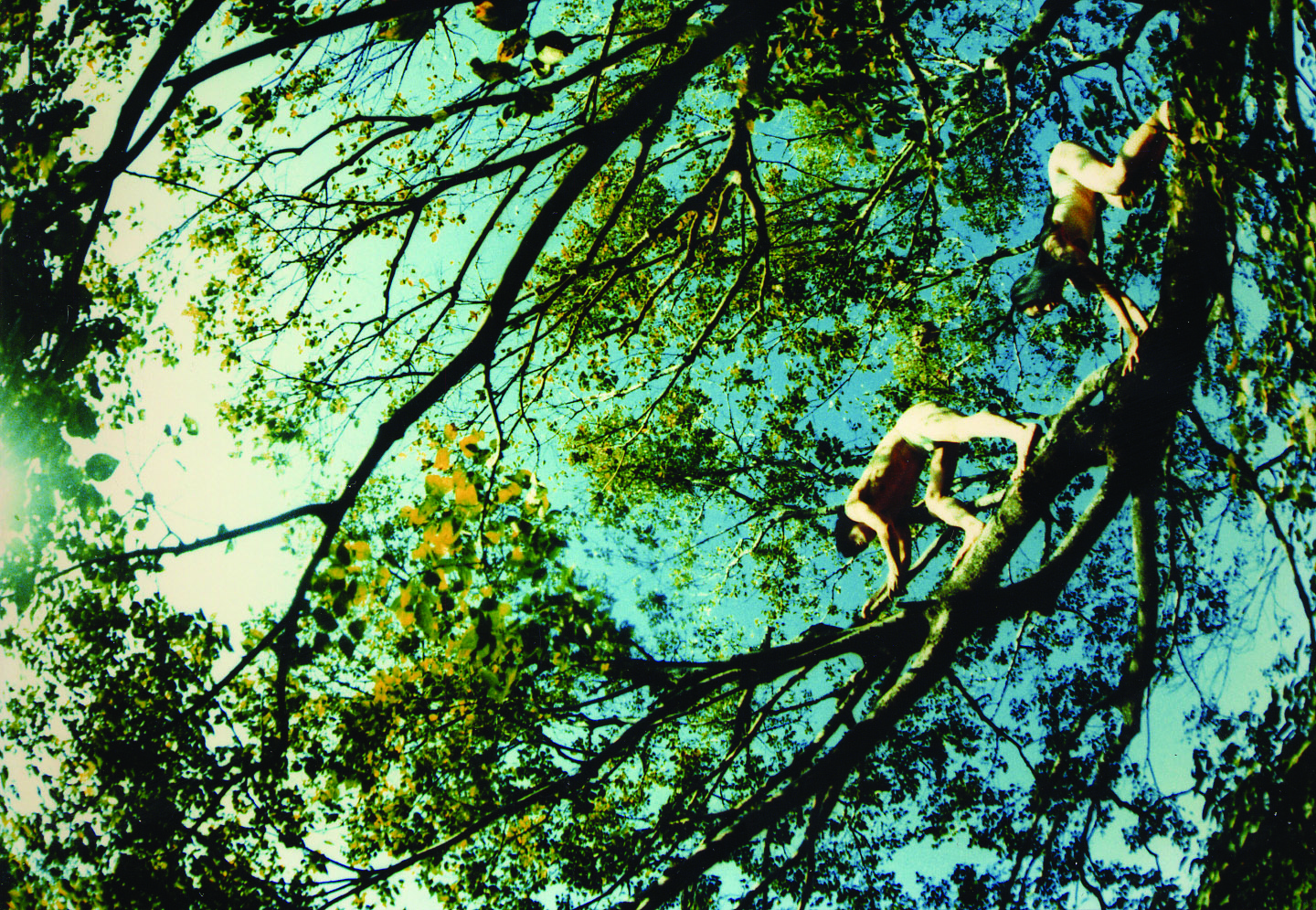 |
|
In 1996, Victor Ma and Mandy Yim, the founders of Y-space, spent a year with non-professional dancers for land-related physical training and rehearsed “Unconscious I - Awakening" in Tai Kong Po, Yuen Long, New Territories. Photographer: Cheung Chi Wai
|
Y-Space was established in 1995 by dance artists Victor Ma Choi-wo and Mandy Yim Ming-yin. It was the first artist collective in Hong Kong to introduce environmental dance[1] to the rural New Territories. Both Victor Ma and Mandy Yim were in the first graduating class (1988) of the School of Dance at the Hong Kong Academy for Performing Arts. After graduation, they joined the Hong Kong Ballet as full-time dancers. In 1990, Victor Ma returned to the Academy for Performing Arts to study drama, and Mandy Yim joined the City Contemporary Dance Company as a full-time dancer. In 1995, they left the large dance companies and founded Y-Space together.
Y-Space is a non-profit-making performing arts group with the mission of exploring the infinite possibilities of dance and searching for new dance idioms and new artistic directions. For the artists, Y means: "Wild…Wide...Wilderness...light, air, soil, life and breath..."[2] Therefore, Y-Space cares not only about the coordination of the dancer's body with the sound, lighting, and scenery in the black box but also about the relationship between the body and nature.
In these 25 years since the establishment of Y-Space, its representative theatrical works include "None of Your Business" (1995, 2005), "Not a Double Room" (1995-1998, 2010), etc. Their Outdoor performances include park performances "Dance & Drum — Have Fun under the Sun" (1999), street shows “Air and Breath" (2000-2008), and makeshift theatre* shows "The Key to Happiness" (2008-2009), etc.
*During the Jiao Festival or the Yu Lan Festival in Hong Kong, various communities build a temporary structure (makeshift theatre) to stage Chinese opera performances to thank the deities and rituals.
Victor Ma and Mandy Yim also received the Lee Hysan Scholarship from the Asian Cultural Association and went to the United States to study contemporary dance and theater. To further promote environmental dance, they set up the "Dancing All Around" series at the i-Dance Festival(Hong Kong)[3]. Every year international dancers are invited to create in different spaces in Hong Kong, including farmland, tenement houses, harbors, and other places. The i-Dance Festival was established in 2004, and Y-Space took over the presentation of the Festival in 2009. In 2016, Victor Ma won the "Artist of the Year" (Dance) award at the Hong Kong Arts Development Awards.
When discussing the development of contemporary dance in Hong Kong, commentators generally agreed that dancer Pun Siu-fai was the first person to create environmental dance in Hong Kong. Dating back to the early 1990s, Pun Siu-fai had brought dance to different urban spaces. In contrast, Victor Ma and Mandy Yim's environmental dance took place in the fields of the New Territories. Lau Tin-ming wrote briefly in his Master of Philosophy thesis titled "Modern dance choreography in 1990s Hong Kong": “Their (Y-Space) site-specificity is different from that of Pun Siu-fai's. Y-space interprets the performance site as a place for freedom. They danced half-nakedly with vigorous jumps and extensions to express emotions. They also lighted a campfire at the site, which is not allowed in a theatre setting."[4]
And the renowned local dance critic Lok Fung commented that Y-Space "walks into the community, the people, even the mountains and fields of nature, its "locality" follows the rhythm of the city's development. "[5]
This research project focuses on environmental dance works created by Y-Space in rural New Territories, including "Unconscious I & II" (1997-1998) and "Dance at Walled Villages I - III" (2010-2013).
Unconscious I - Awakening (Site-Specific Performance)
Date - 22-23 February 1997
Venue - Tai Kong Po, Kam Tin (Yuen Long Plain), Hong Kong
/A primal force in the soil had been asleep, suddenly awakened before 1997. With tremendous effort, it climbed to its feet, surveyed its surroundings, and found the place unfamiliar. Fighting and hatred pervaded. It was no longer peaceful. This land, which had been home for billions of years, must now be abandoned in search of a better place./
Unconscious II - In Search of the Forgotten Senses (Outdoor performance)
Date - April 1997
Venue -Lockhart Road, Footbridge in Wanchai, Hong Kong
Date - 3 May 1997
Venue -Lion Rock Road, Kowloon City, Kowloon & Nathan Road Park Lane (Shopper’s Boulevard), Tsim Sha Tsui, Hong Kong
/Spirits rose from the dust of the fields and entered the concrete jungle of the fast encroaching city. Here, they searched for remnants of love for the land, some sense of belonging. Amidst the crowds of rushing, colliding city dwellers, they discover that everyone is searching, and everyone is lost…/
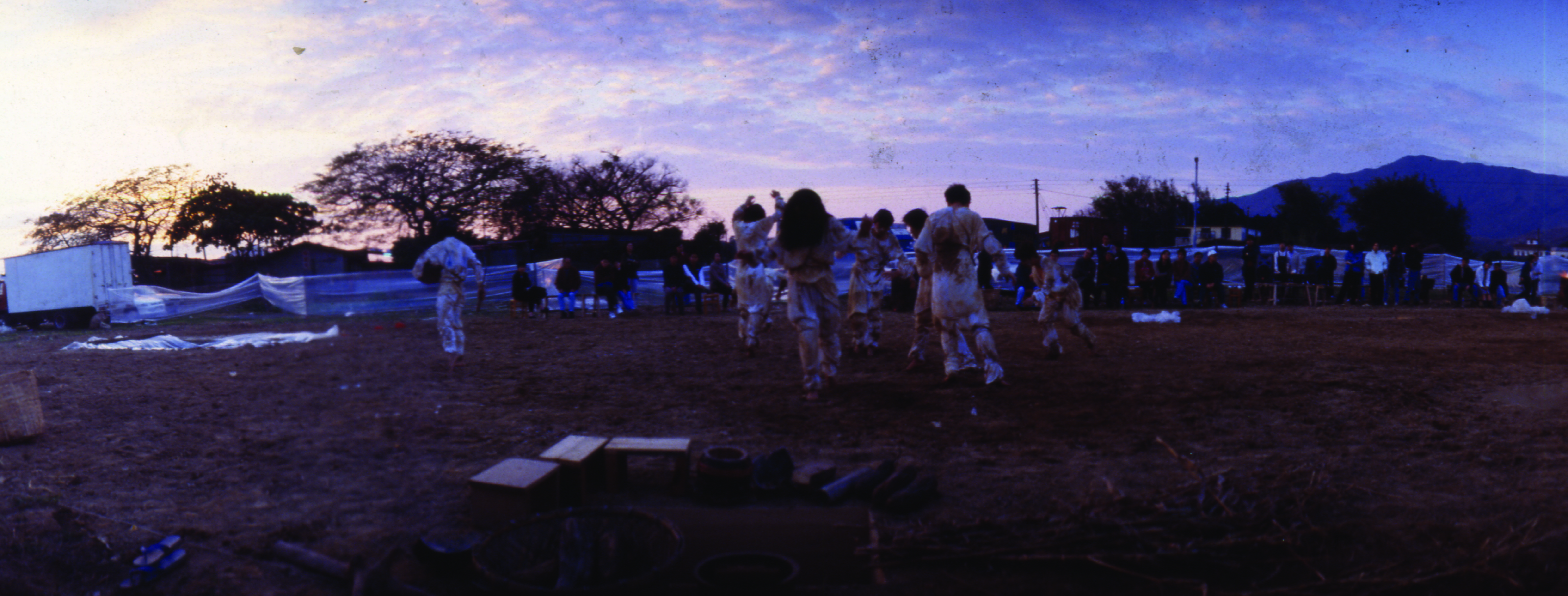 |
|
During the performance of “Unconscious I - Awakening.” Photographer: Cheung Chi Wai
|
On the weekend in February 1997 (the 16th and 17th day of the first lunar month). The soil in Kam Tin, Yuen Long was neither wet nor too dry because there was not much rain in the past winter. Artists Victor Ma and Mandy Yim led seven non-professional dancers to perform “Unconscious I - Awakening" in Tai Kong Po at Kam Tin. Although they only performed for two days, the perparation behind it was more than a year of "having a romantic relationship" with the land. "We started by digging the fields, and with the students, we learned what the mud in Kam Tin was like. Then, I asked everyone to roll their bodies on the soil, but it turned out that this requirement was too challenging because city people were afraid of dirt. Originally we had a dozen students, but only seven remained in the end.” In the interview, Victor Ma summed up that year with the term “having a romantic relationship.”
“Unconscious I - Awakening" combines contemporary dance with the New Territories. Victor Ma and Mandy Yim recruited more than ten non-professional dancers, including accountants, teachers, etc., and spent more than a year on-site physical training. For Victor Ma, environmental dance should first be inspired by that place and then merged with it. He is an indigenous inhabitant of Kam Tin, so bringing contemporary dance back to the homeland has always been his ultimate goal of creation.
Victor Ma and Mandy Yim used "Organic Movement" to systematize this training set and designed different soil, gravity, and breathing training. The first step was to learn to contact the land. They led students to lie on the earth and feel the texture of the ground with their skin. The training went through four seasons. As the weather changed, the soil was sometimes wet and sometimes dry. Students had to lie on the earth with their backs first, and then their necks. The artists then led the students to close their eyes, listen to their own breathing, and search for the point where the body was held by gravity, imagining that the body merged with the wind and the soil through the breath. When students gradually understood how to feel the land, the artists and students used their bodies to create different sounds in response to nature. In training, Victor Ma and Mandy Yim and students experimented with different rhythms of breathing to make sounds with different tones and beats, and these sounds all became elements in the performance. At the same time, they also spent time getting to know about the trees in Kam Tin, climbing on hundreds of years old trees together, observing the growth of the trunks, and touching the texture of the trees.
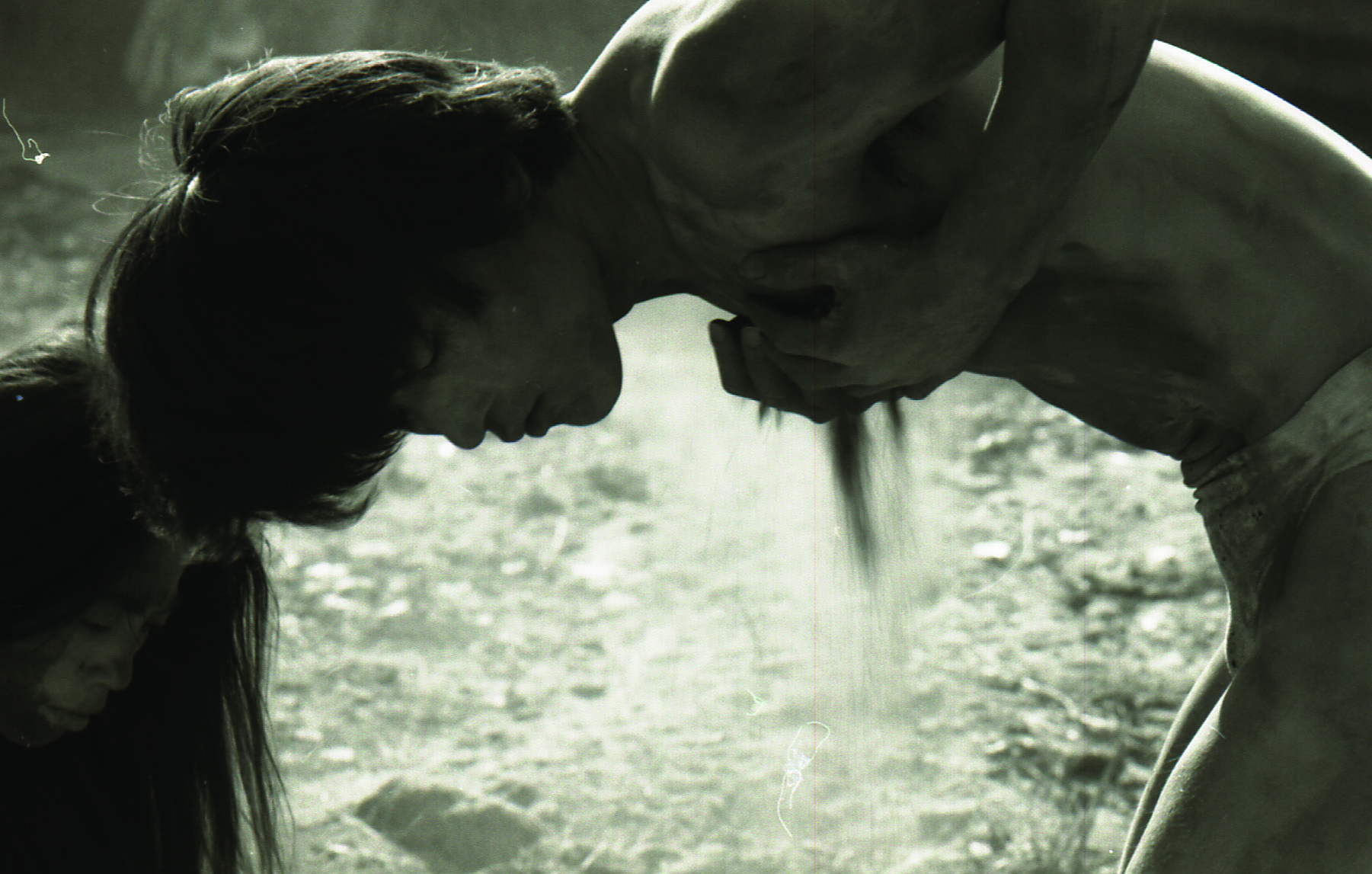 |
|
“Unconscious I - Awakening” took a year to practice with the land with amateur dancers in Yuen Long, New Territories. Photographer: Cheung Chi Wai
|
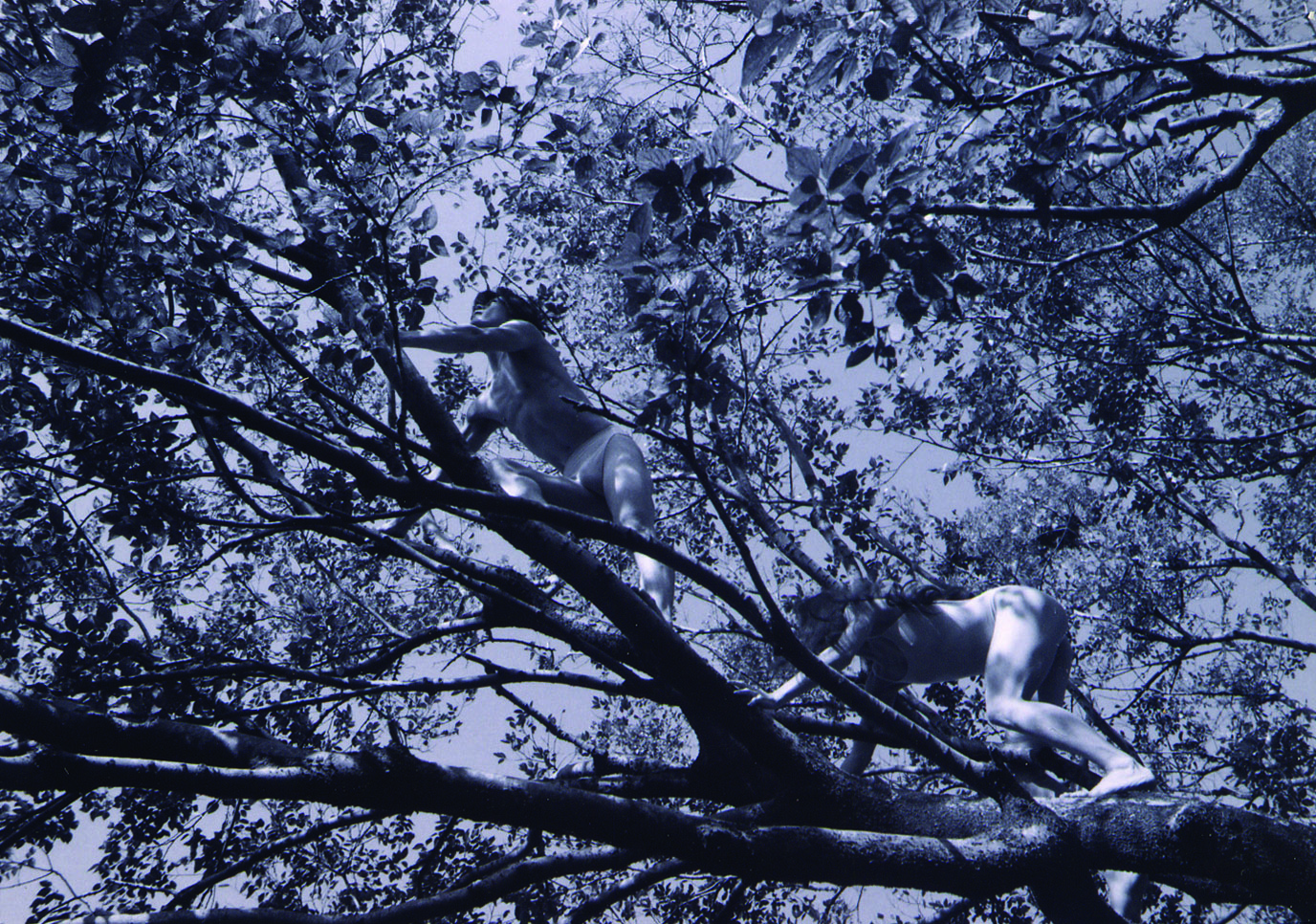 |
|
“Unconscious I - Awakening” included tree climbing exercises. Photographer: Cheung Chi Wai
|
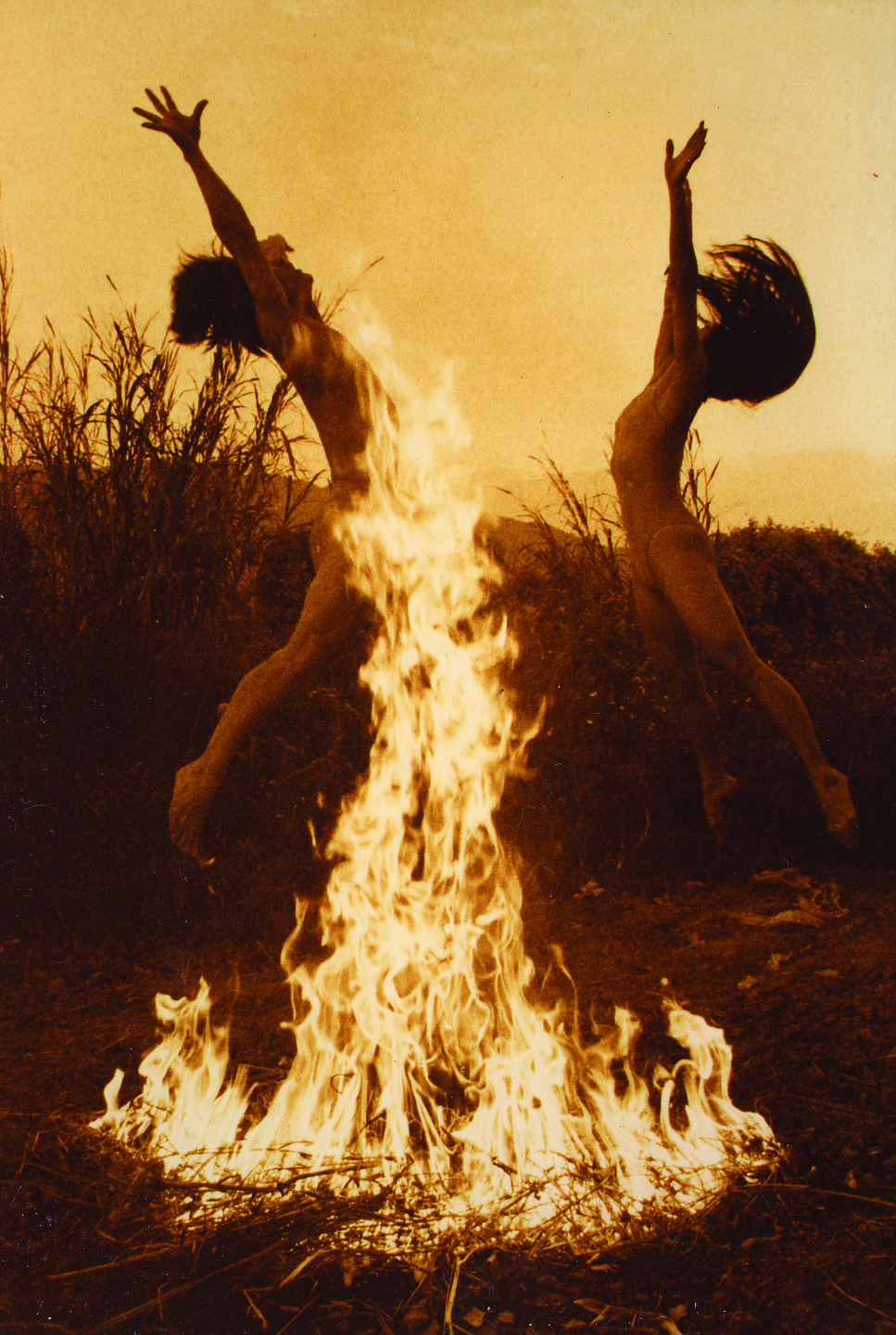 |
|
In “Unconscious I - Awakening,” the artists lighted a fire and danced on the field. Photographer: Cheung Chi Wai
|
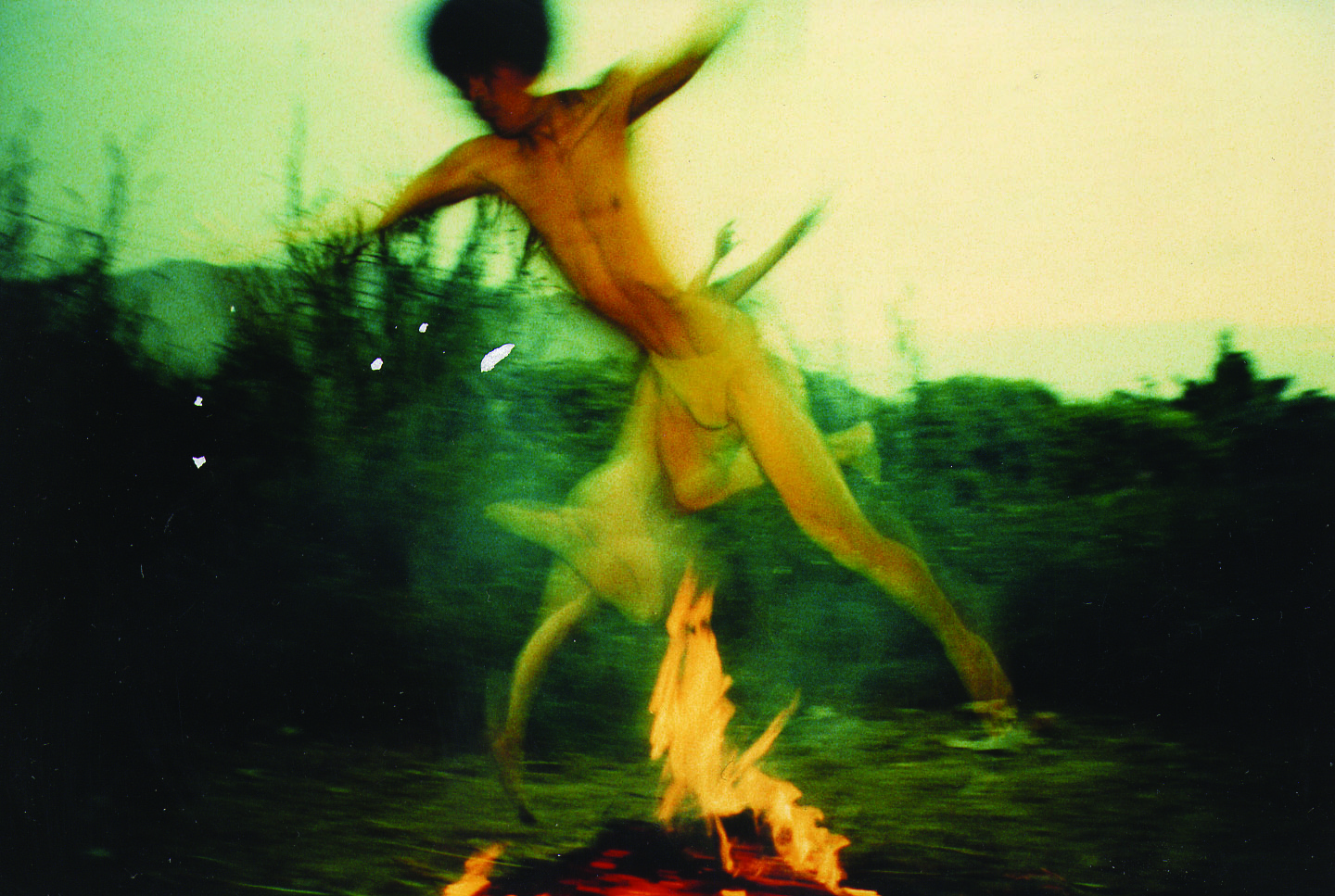 |
|
In “Unconscious I - Awakening,” the artists lighted a fire and danced on the field. Photographer: Cheung Chi Wai
|
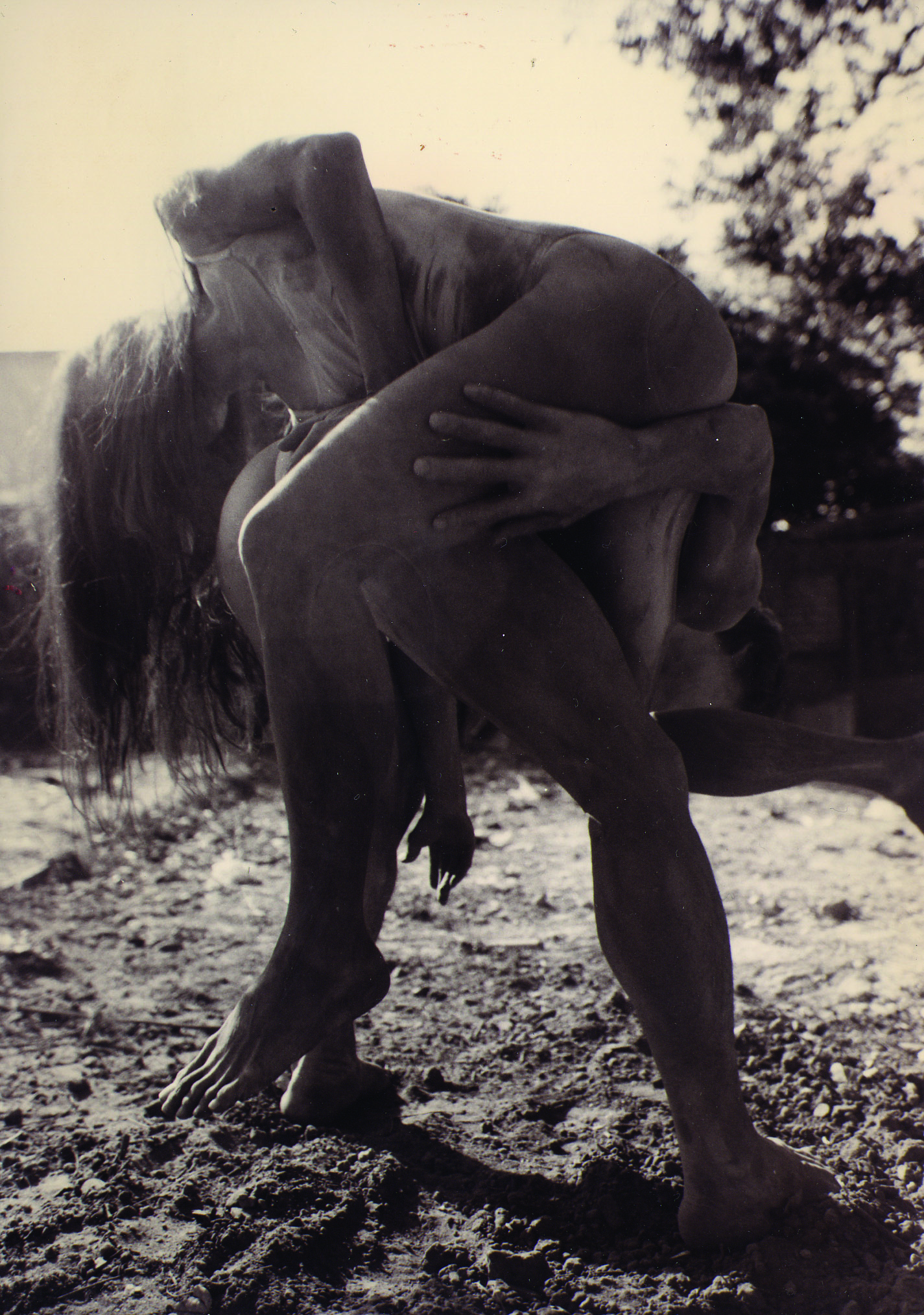 |
|
“Unconscious I - Awakening” took a year to practice with the land with amateur dancers in Yuen Long, New Territories. Photographer: Cheung Chi Wai
|
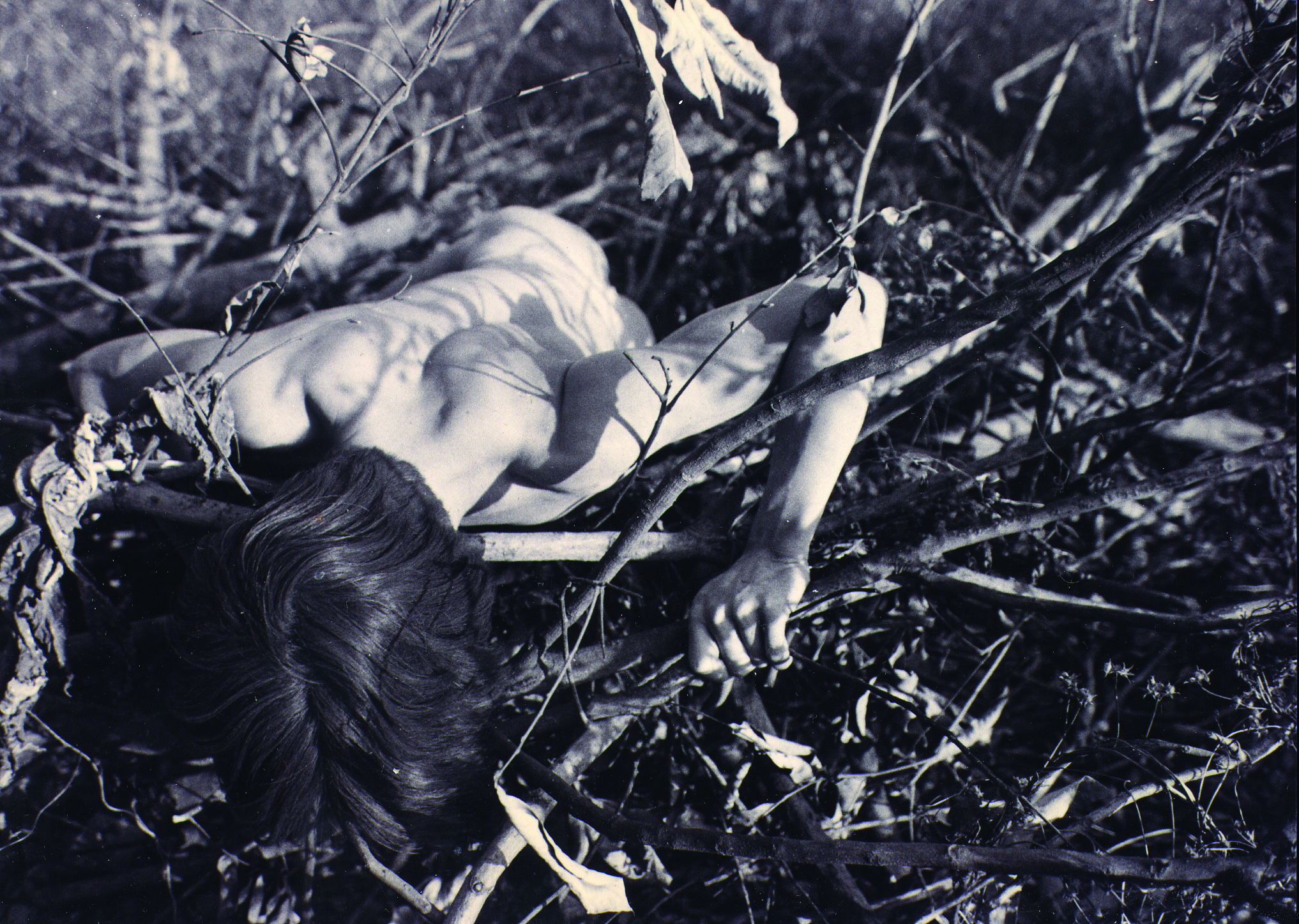 |
|
“Unconscious I - Awakening” took a year to practice with the land with amateur dancers in Yuen Long, New Territories. Photographer: Cheung Chi Wai
|
After a year of on-site training, Victor Ma and Mandy Yim, and students created a story about the ghosts of the land: seven spirits of the land who had slept for hundreds of billions of years awakened from the joys and worries of the handover of Hong Kong in 1997. They worked together to revive and protect the river (played by Mandy Yim) and explored this changing land. The story was simple, and the focus of the performance was the interaction between the dancers and nature. At the beginning of the performance, Victor Ma played the first land ghost who woke up. He sprinkled salt on the spirits who were still in a state of unconsciousness. The ghosts initially lying on the soil and covered with white plastic bags slowly woke up, crawled out of the mud one by one, and made different high and low breathing sounds, exploring the surrounding environment. Sometimes the ghost’s body developed into the air, stretched out its hands and feet, and occasionally returned to the ground, rolling on the dirty floor. Later, the ghost who protected the river woke up. She lighted a campfire and danced with the spirits around the fire with their more rhythmic bodies. The river ghost and the land ghosts danced vigorously by the fire with their nearly naked bodies as if it as a sacrifice ceremony.
Although the story and dance were all planned, accidents produced different effects. On the first day of the performance, the bus was late due to a traffic accident. Hence the performance could not start until evening. Initially, Victor Ma and Mandy Yim calculated the sunset time in winter and planned to finish the performance at the "magic hour" before sunset. Victor Ma had to turn on his friend’s car to perform in the night. The performance went smoothly the next day.
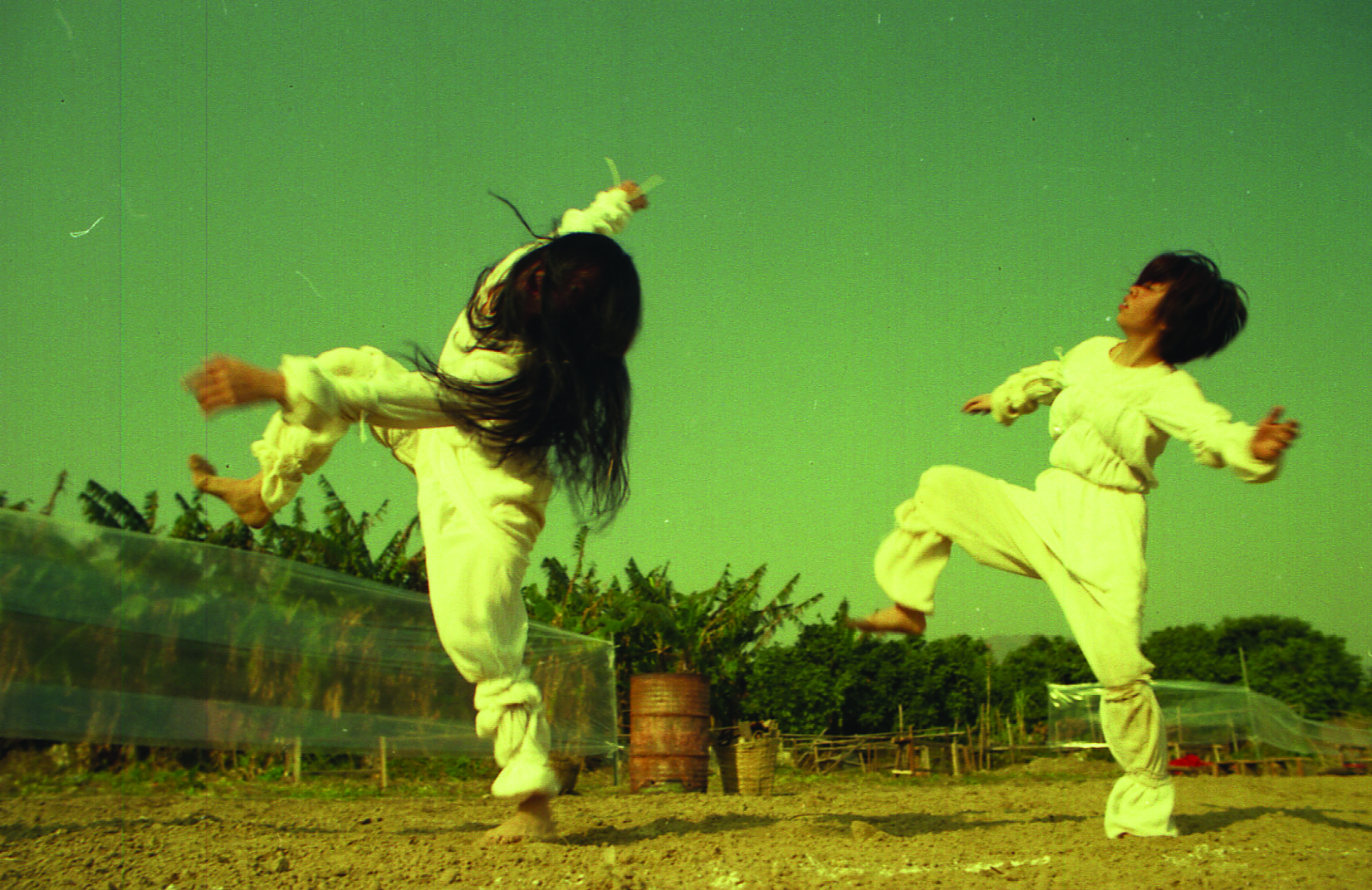 |
|
During the performance of “Unconscious I - Awakening.” Photographer: Cheung Chi Wai
|
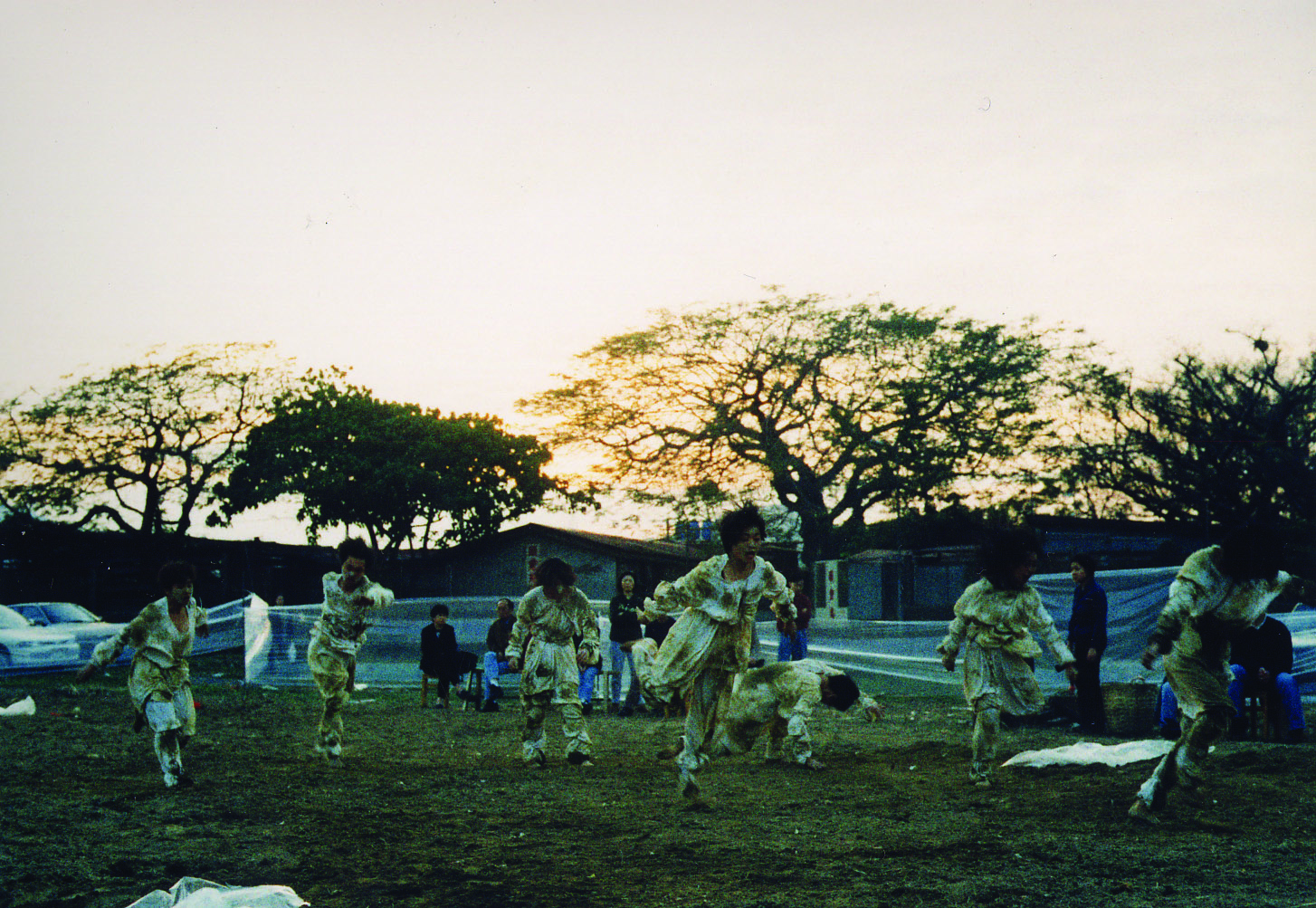 |
|
During the performance of “Unconscious I - Awakening.” Photographer: Cheung Chi Wai
|
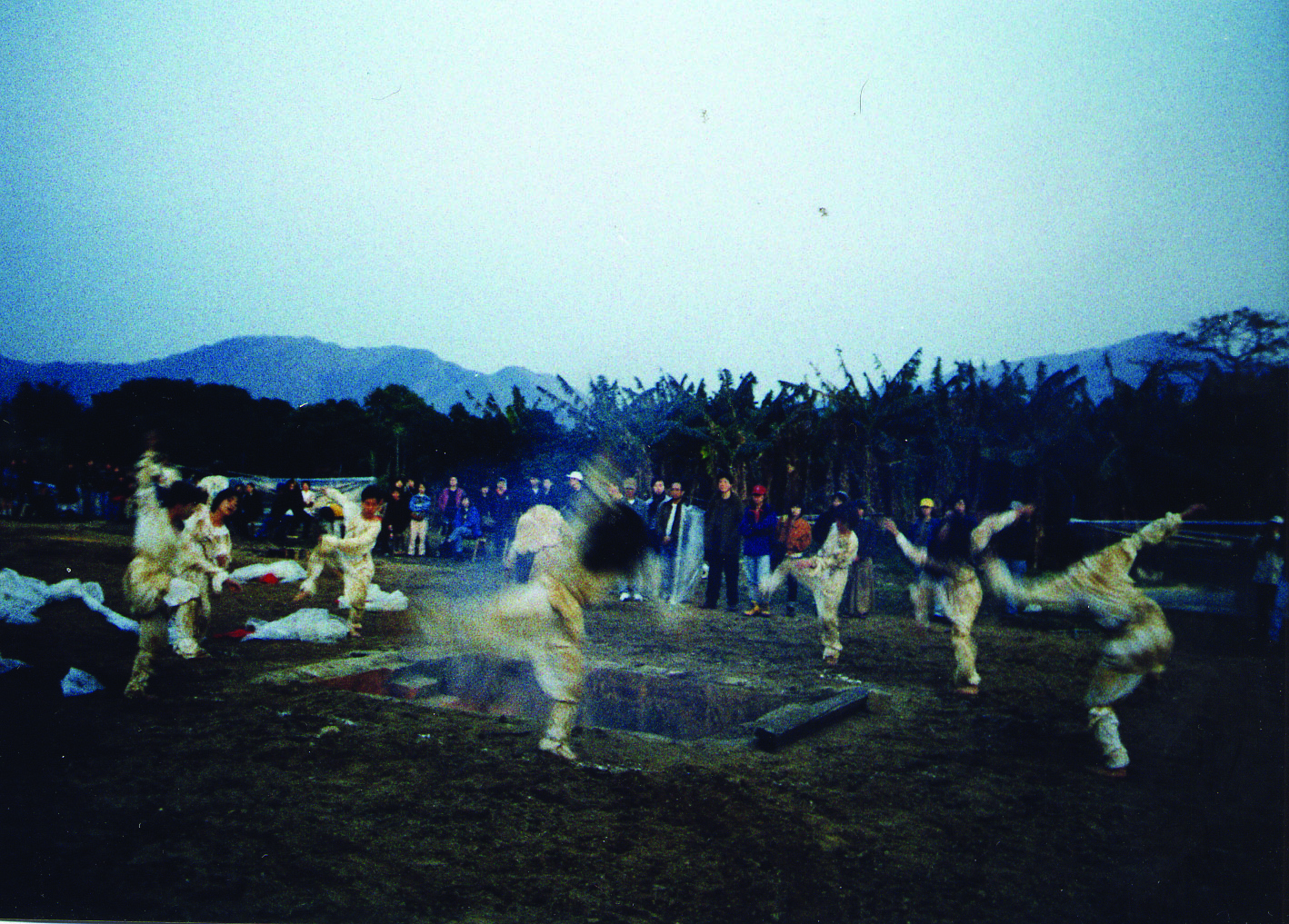 |
|
During the performance of “Unconscious I - Awakening.” Photographer: Cheung Chi Wai
|
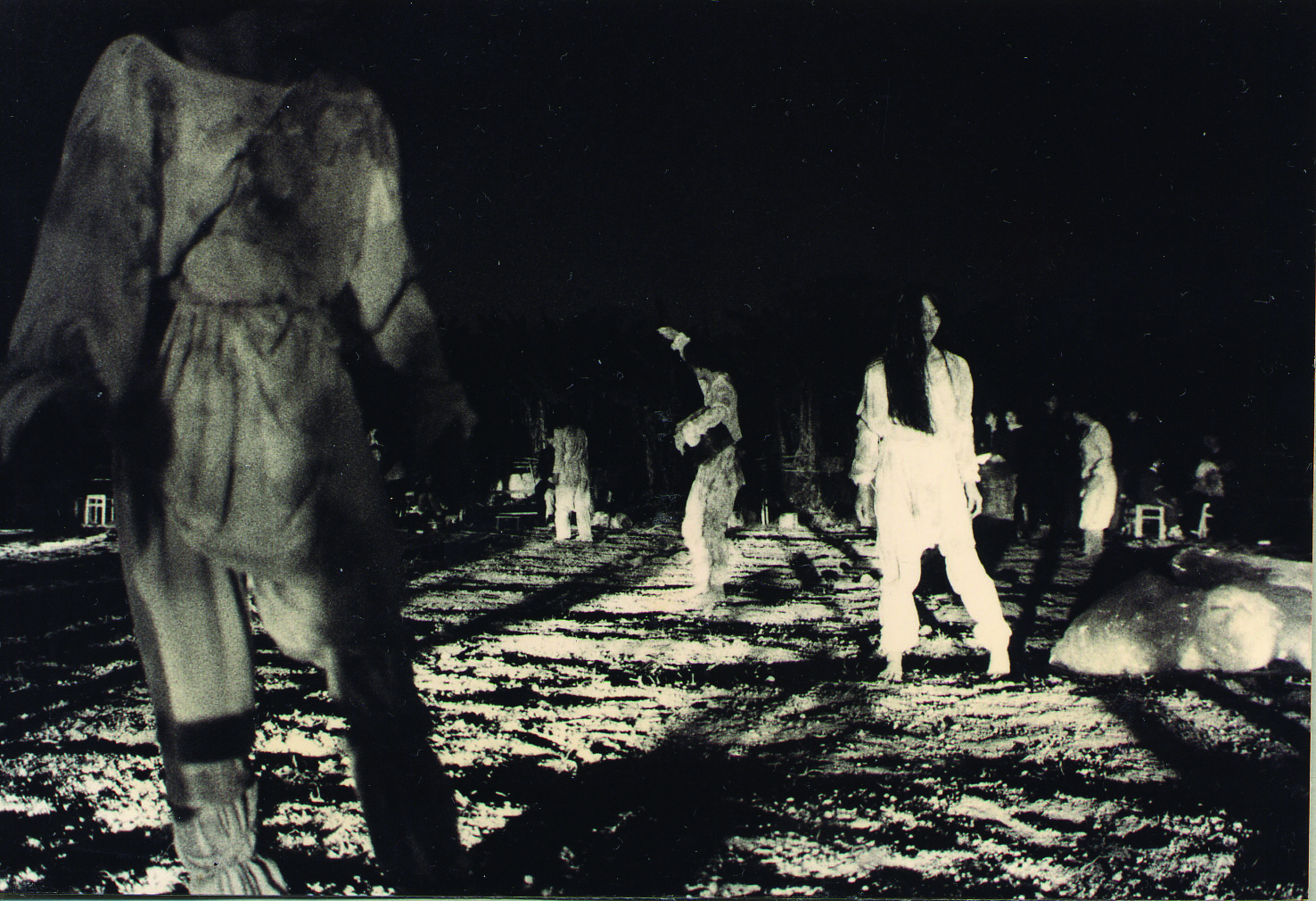 |
|
The first day of the “Unconscious I - Awakening” performance started later than the scheduled time. The surrounding environment had turned black in the latter part of the performance. Photographer: Cheung Chi Wai
|
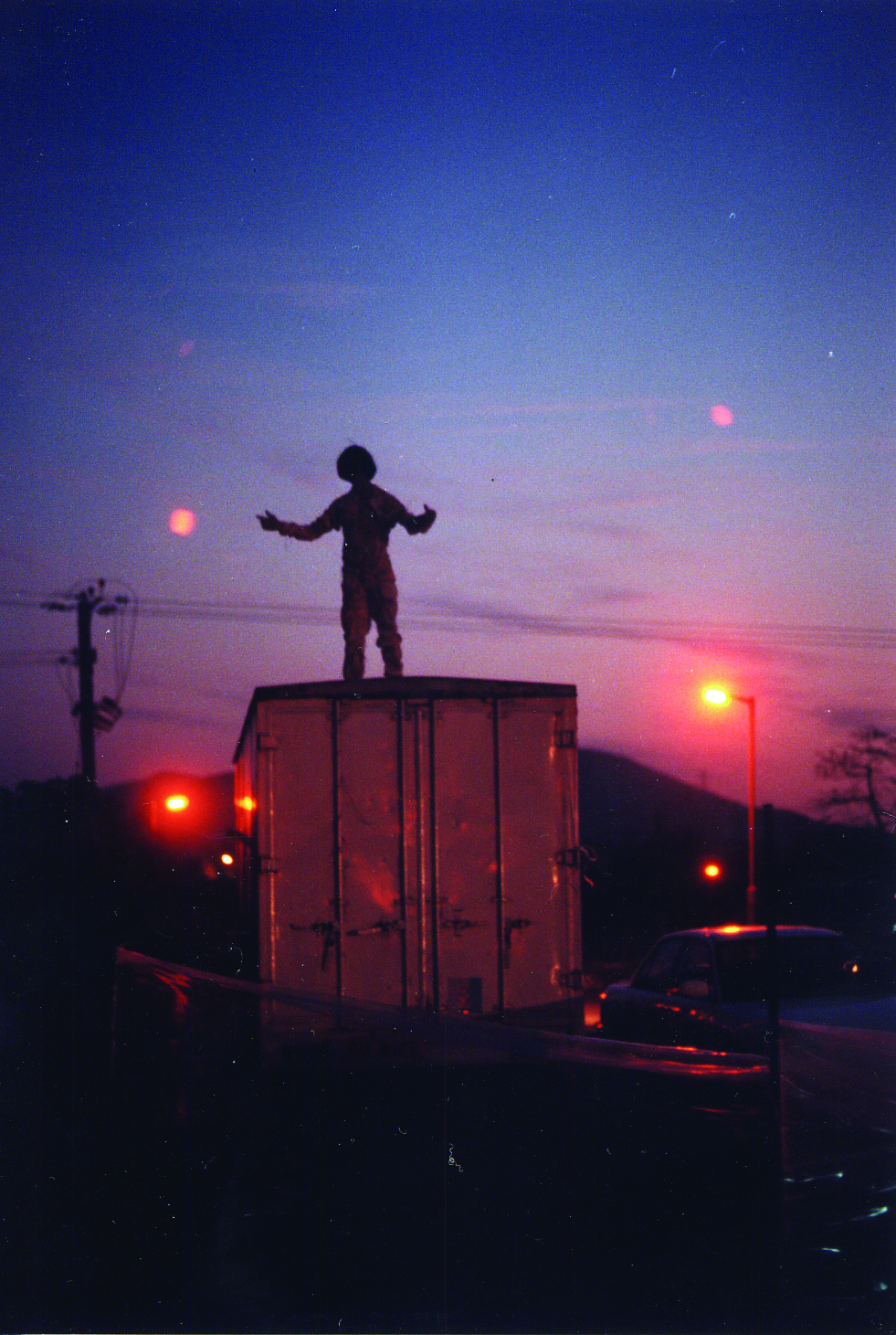 |
|
The second show of "Unconscious I - Awakening" ended in "magic time" as planned. Photographer: Cheung Chi Wai
|
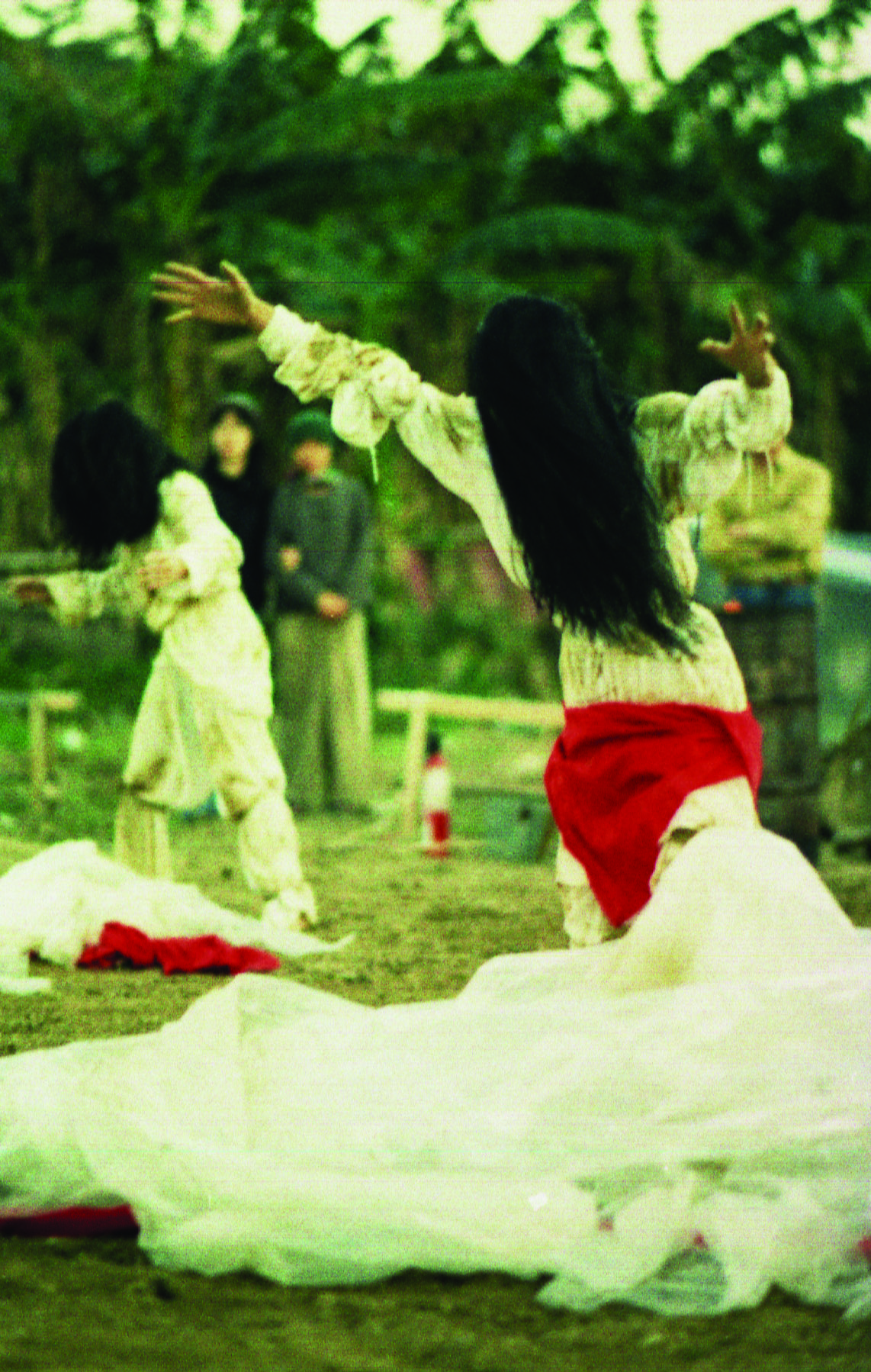 |
|
In "Unconscious I - Awakening," Mandy Yim played the ghost of the river. Photographer: Cheung Chi Wai
|
In the "Unconscious" series, the artists were concerned about what else coexisted with humans in the rural New Territories? So they responded to this question with the role of the ghost of the land. The spirit of the land was a core concept in this work. For the artists, the ghost of the land was not a human being and was not necessarily related to religion, but imagining the possibility of multiple relationships between humans and the land. In "Unconscious I - Awakening," rural development awakened the ghosts of the land. They took the soil from Yuen Long and walked into the urban space in "Unconscious II - In Search of The Forgotten Senses," including Kai Tak Airport, Wan Chai, and Tsim Sha Tsui, to understand what the urban environment was like.
Unlike "Unconscious I - Awakening," the participants in "Unconscious II - In Search of The Forgotten Senses" were all professional dancers. The sub-scenes of this performance included Surrender, Catch, Transition, Sino-British Duo Dance, Dog Face Years, etc. From this perspective, "Unconscious II - In Search of The Forgotten Senses" had more footnotes and views on current affairs by the artists compared with "Unconscious I - Awakening." However, they were still using nature as the starting point for their performances. The performance was divided into two parts, outdoor and theater performances. The ghosts of the land headed by Victor Ma and Mandy Yim, covered in mud, strolled into the city. The dancers did not perform intentionally. They seemed to interrupt the city's original rhythm with their bodies. In the outdoor performance, the dancers’ muddy bodies were natural. Although nature was initially a part of the city, in the eyes of the urban people, these ghosts of the land suddenly became foreign objects, dirty. Back to the theater, all dancers put different fragments collected in the rural and urban areas on the stage. Besides the ghosts of the land, Victor Ma and Mandy Yim also added the role of urbanites. They were obsessed with the playful and material life, which contrasted with the simplicity of the ghosts of the land.
From the perspective of the relationship with nature, the focus of this theater performance was not to interact with nature but to summarize the creation of outdoor performances of "Unconscious I" and "Unconscious II" and summarize those experiences and ideas on the stage.
When the dance critic Lok Fung commented on the stage performance of "Unconscious II - In Search of The Forgotten Senses," she tended to understand it symbolically. "The choreographer Victor Ma is very pessimistic, and the whole dance has a low and dark tone. Even if there is light, it is a strong, violent, psychedelic radiation. Under his dance, the landscape of Hong Kong after 1997 is either fragmented or dying. The collision of everything points to an end that has no way out." [6] Victor Ma looked back at the series of "Unconscious I" and "Unconscious II" today and said: "In the early 1990s, I returned to the New Territories after studying. Seeing that the farmland and river where I grew up have been reclaimed and no longer exist. All of the lands of Kam Tin changed, which inspired me to spend more than a year to create this series of works regardless of cost."
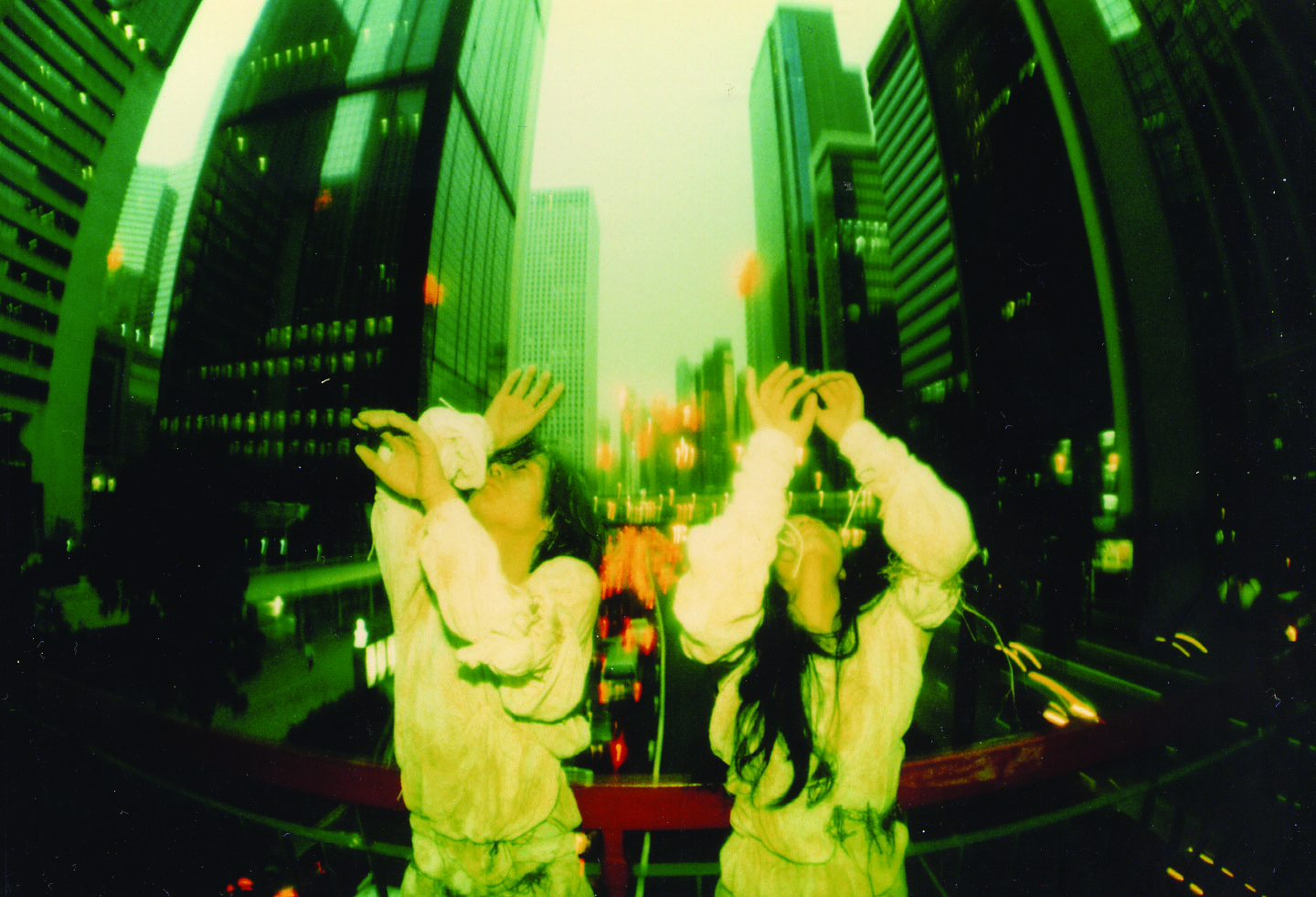 |
|
"Unconscious II - In Search of The Forgotten Senses," the ghosts of the land danced in Wan Chai. Photographer: Cheung Chi Wai
|
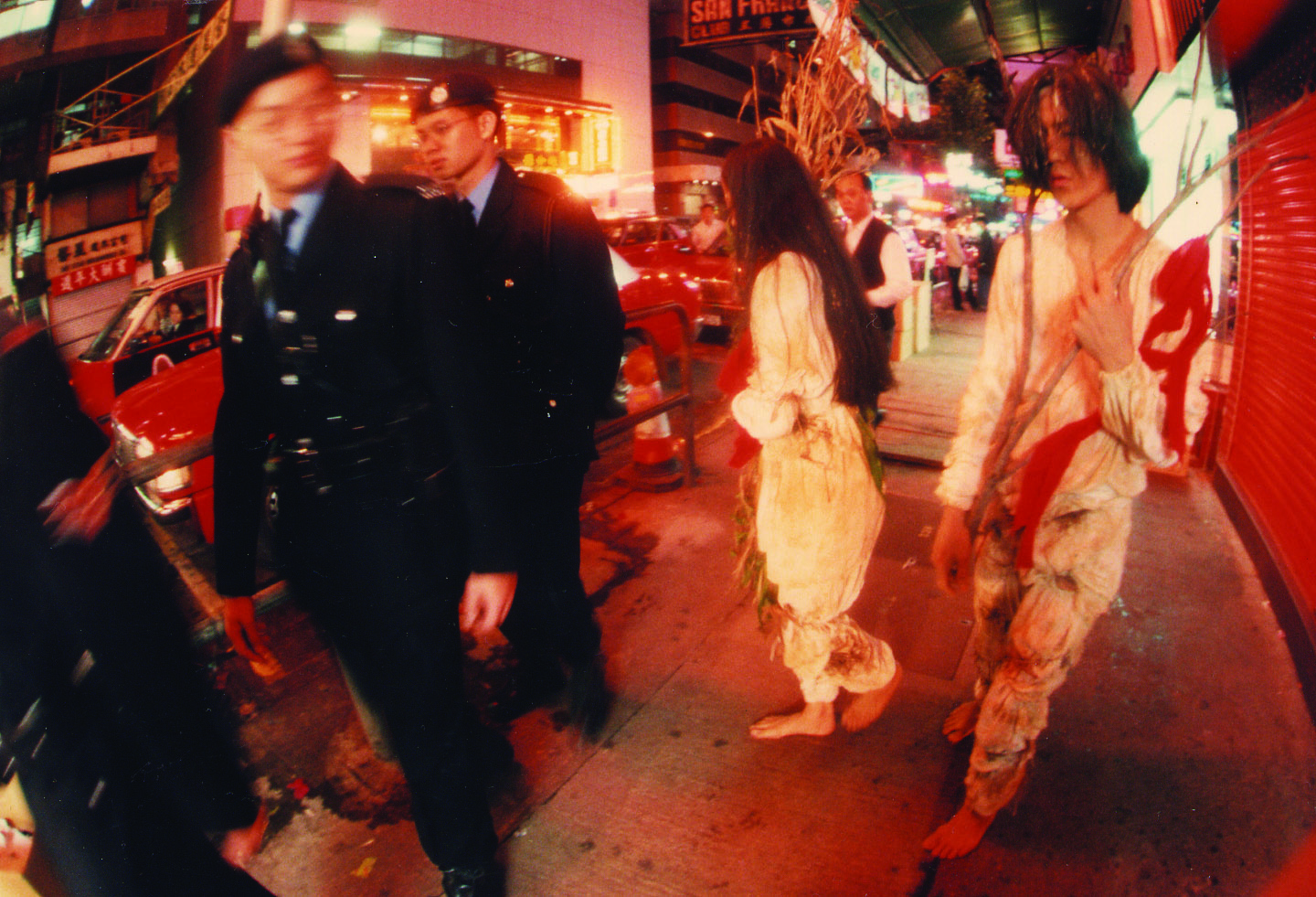 |
|
"Unconscious II - In Search of The Forgotten Senses," the ghosts of the land danced in Wan Chai. Photographer: Cheung Chi Wai
|
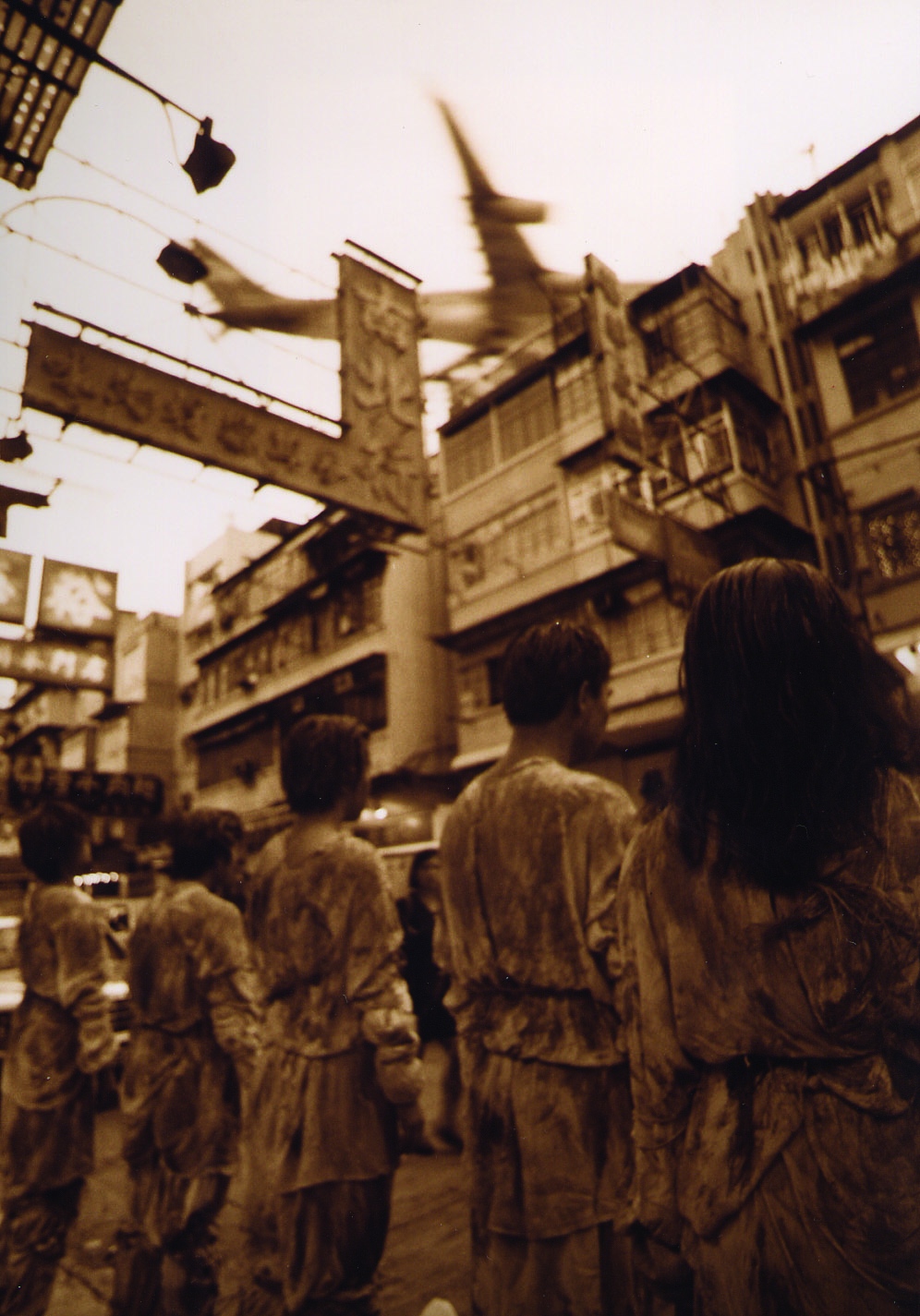 |
|
"Unconscious II - In Search of The Forgotten Senses," the ghosts of the land danced in Kowloon City. Photographer: Cheung Chi Wai
|
Production Team -
"Unconscious I - Awakening" (Site-Specific Dance)
Director: Hema
Choreographers & Performers: Victor Ma Choi Wo & Mandy Yim Ming Yin
Performers: Fiona Tang, Amanda Chan, Davy Leung, Bonnie Fung, Jodi Chan, Cheung Yan & David Leung
Costume Designer & Installation: Andy Tam
Lighting Designer: Yu Wai Hung
Producer: Ribble Chung
"Unconscious II - In Search of The Forgotten Senses" (Outdoor performance)
Director & Conceiver: Hema
Co-ordinator & Performer: Victor Ma Choi Wo & Mandy Yim Ming Yin
Performer: Fiona Tang, Amanda Chan, Davy Leung, Bonnie Fung & Jodi Chan
Costume Designer: Andy Tam
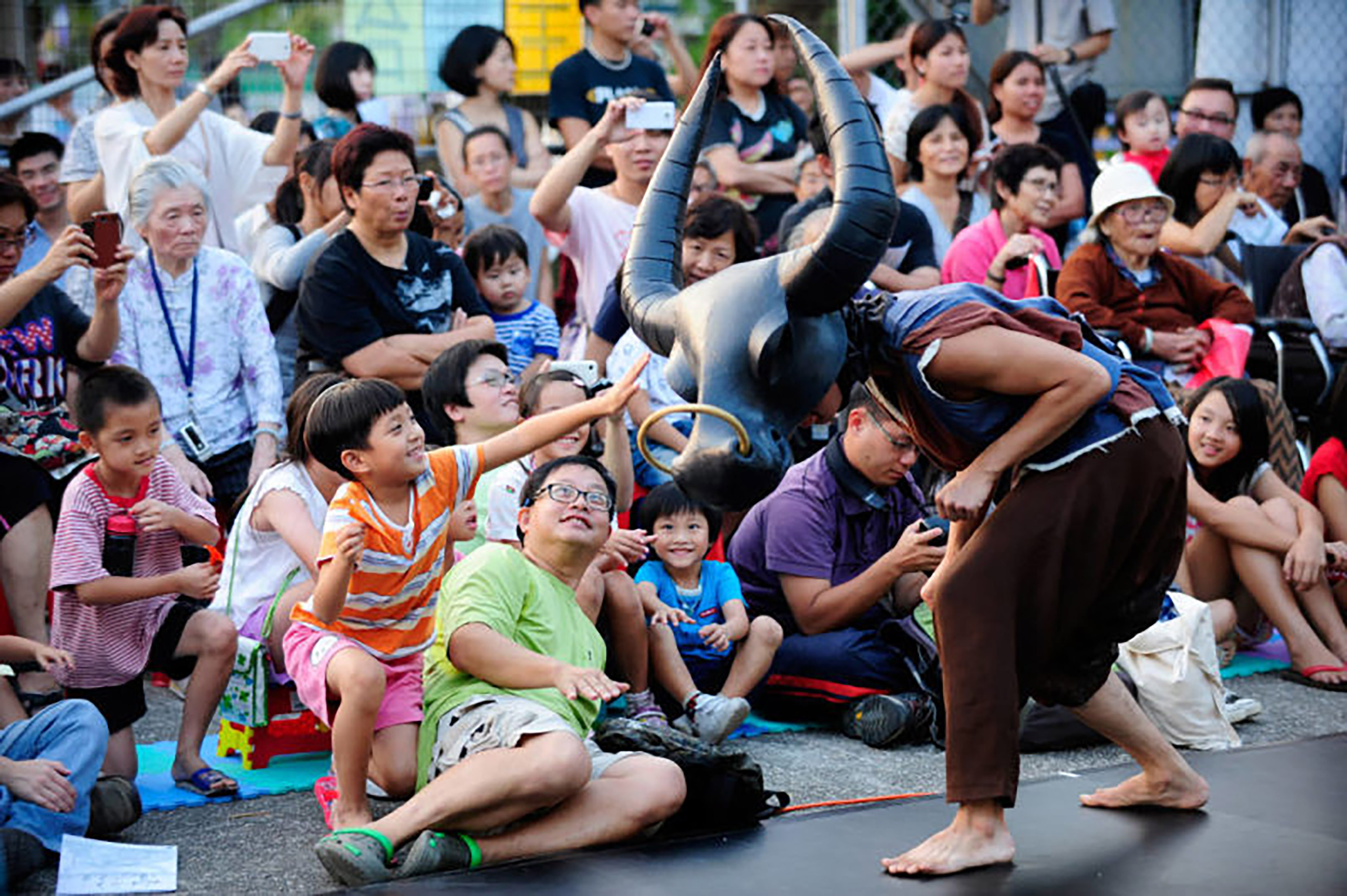 |
|
“Dance at Walled Villages II” performance.
|
After the "Unconscious" series, Y-Space also developed in multiple aspects. They put more effort into promoting dance to the public, especially by combining contemporary dance with the traditional cultures of New Territories. It includes performing the park show "Dance & Drum — Have Fun under the Sun"(1999), performing "The Story of Island and Boat - Hong Kong" (2004) on the outlying islands, performing the contemporary dance shows "The Makeshift Theatre Project (I-II)" (2008-2009) in traditional makeshift theatres, etc. In 2010, the dance group created "Dance at Walled Villages," which combined the walled village culture[7] with dance and drama and was praised by many critics as a creation of can be enjoyed by elites and generals. The "Dance at Walled Villages" series was supported by the Community Cultural Ambassador Scheme. The audience was expected to be the general public with no theater experience. Therefore, many parts of the series tell stories about walled villages, farmers, and animals in simple and easy-to-understand ways, hoping to arouse the public’s interest in rural culture, awareness in conservation, and the history of the surrounding villages.
Unlike the "Unconscious" series, "Dancing at Walled Village" focused on storytelling, and there was less "love feeling" between the body and nature. The story of "Dancing at Walled Village I - The Disappearing Buffalo" was closely related to the culture of the walled village. The origin of the story was "Dajiao"[8]. According to the tradition, "Dajiao" is organized every ten years by villagers, it is the villagers' worship of the land, and they pray to deities to bless the growth of agricultural products at the same time. But it was no longer meaningful for the leading actor of the story because he had immigrated to a foreign country and did not need to farm anymore. The protagonist returned to the New Territories because of the tradition of “Dajiao" and met Wong Choi again. Wang Choi was the New Territories buffalo that the protagonist grew up with when he was a child. In the performance, Wong Choi was played by a Korean physical actor Kim Da Gun, wearing a black bullhead mask. The leading actor's name was “Dai Shui Ngau” (literally means Big Buffalo in Chinese), played by drama actor Rico Wu. The dialogue and the physical performance in the show each accounted for half. At night, the buffalo carried Dai Shui Ngau on its back. Dai Shui Ngau looked at the sky full of stars, recalling the days when he was a child, and lamented that the rural areas had become utterly unrecognizable due to urban development. As if it seemed as the inner self-reflection of Victor Ma as the creator and indigenous inhabitant. Finally, Dai Shui Ngau met up with his former lover and decided to stay in the New Territories together and engage in conservation work.
Many critics appreciated this performance. The reviewer of Hong Kong Arts Development Council, Dr. Ho Tin-hung, wrote: "The dance scene is integrated with the local environment, and the audience at the show often responds to the plot shown in the theater. It feels very kind and resonant."[9] “Dance at Walled Villages II - The Return of the Buffalo” and “Dance at Walled Villages III” were later released by Y-Space, with more interactive elements, such as celebrating with the villagers during the Lunar New Year. Y-Space directly added a traditional village festival ceremony to the performance.
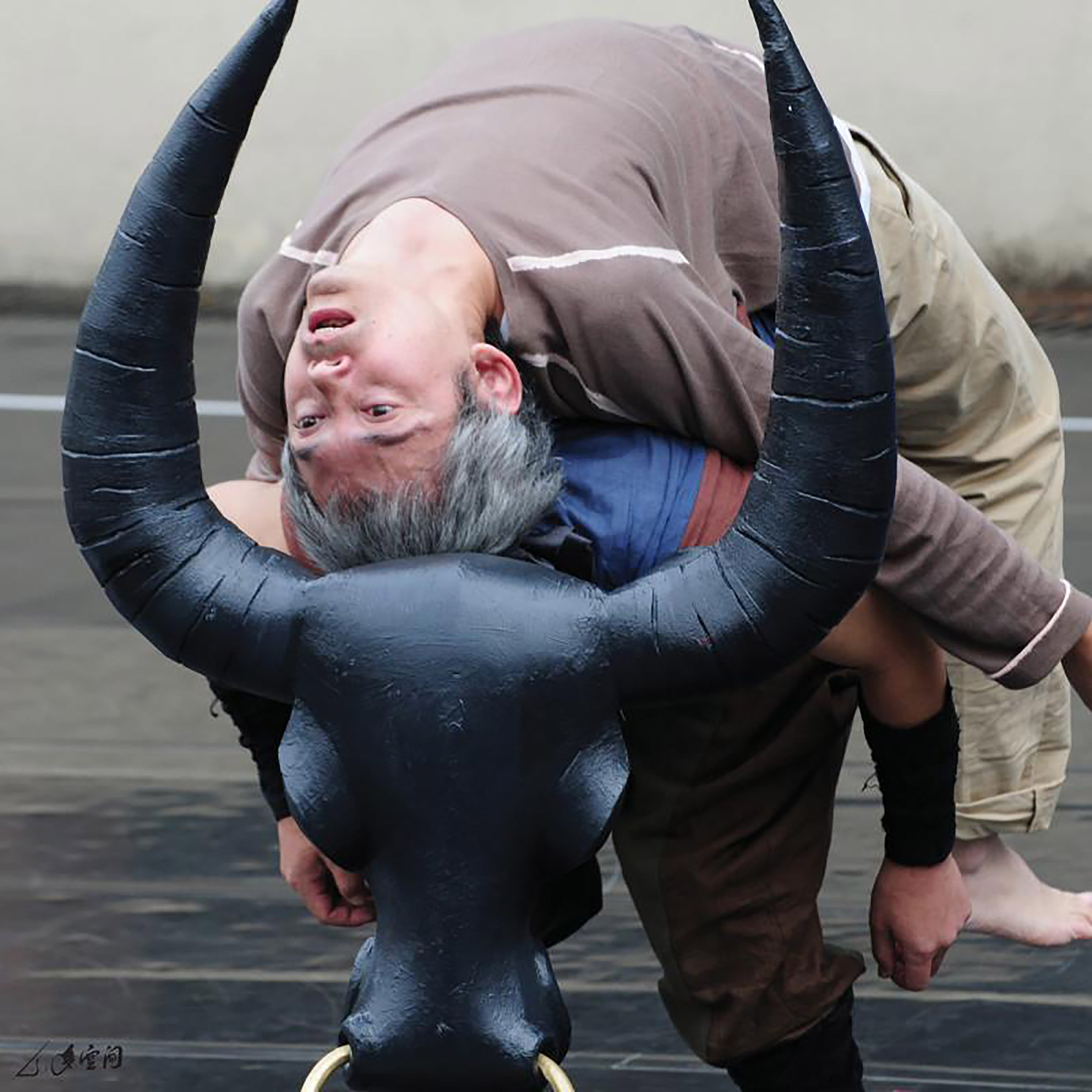 |
|
In "Dance at Walled Village I," the buffalo carried Dai Shui Ngau to watch the stars.
|
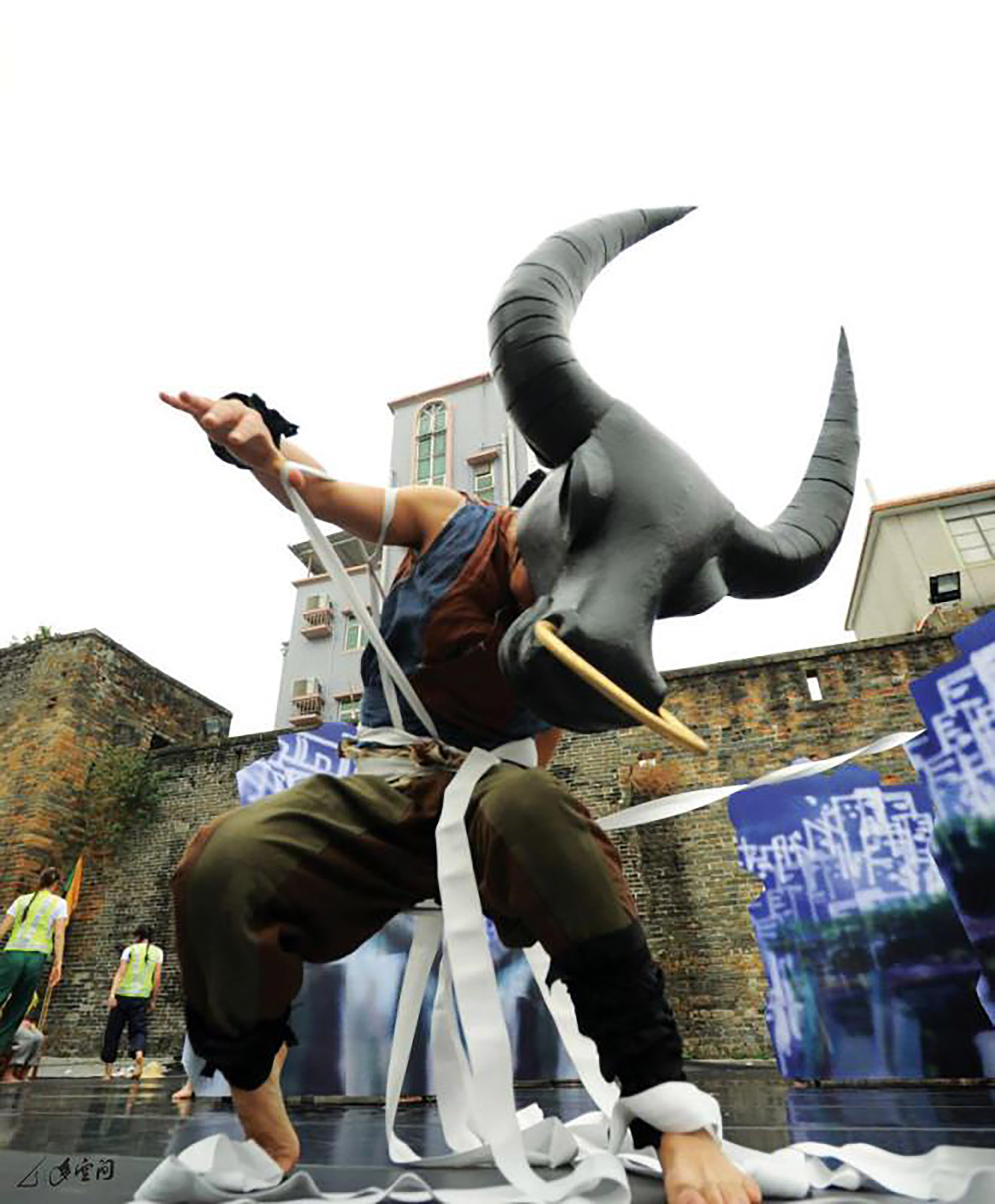 |
|
In "Dance at Walled Village I,” the buffalo was played by Korean actor Kim Da Gun.
|
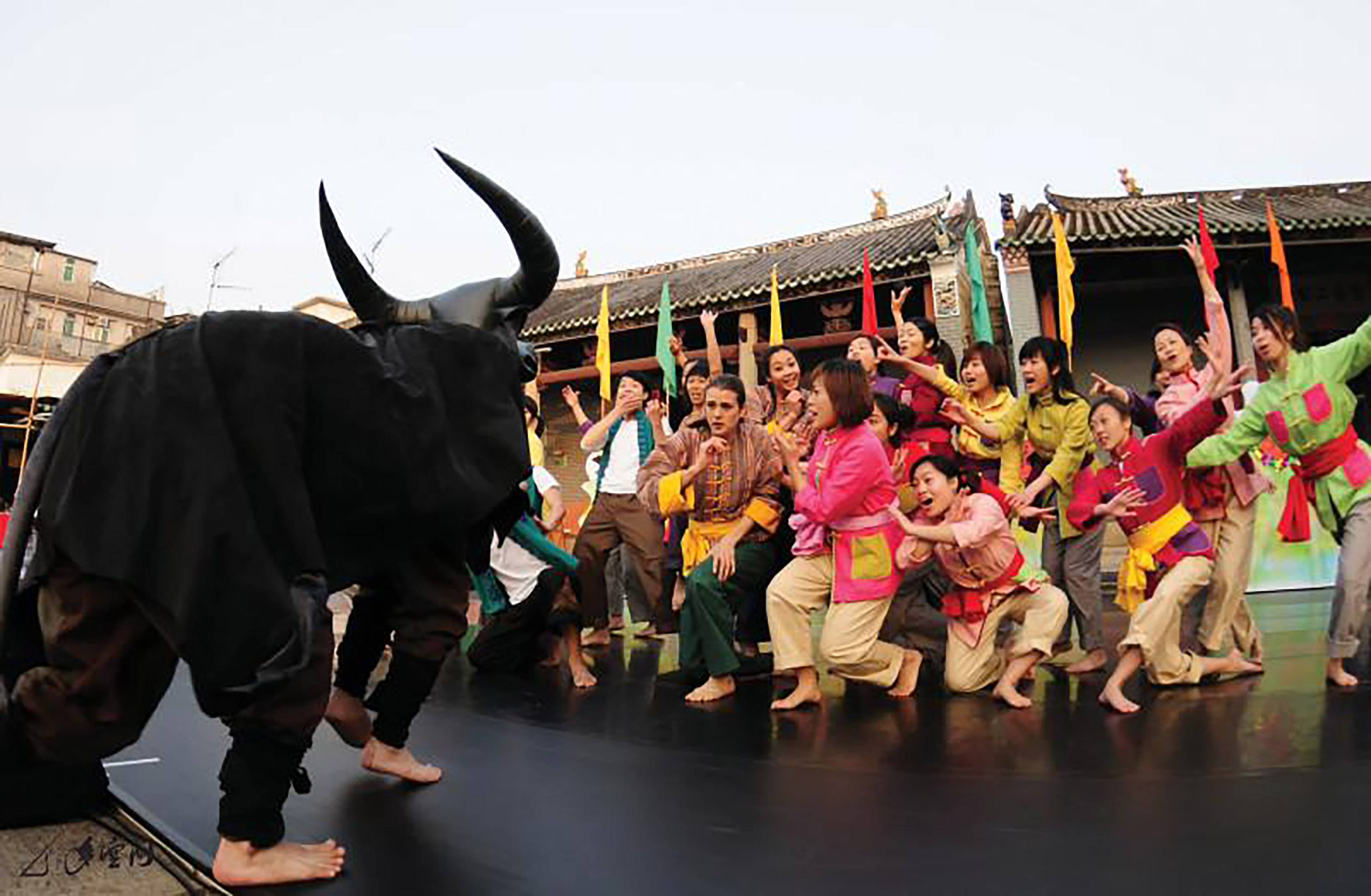 |
|
During the performance of "Dance at Walled Village I.”
|
"Dance at Walled Village I - The Disappearing Buffalo”
-25 December 2010: Kat Hing Wai, Kam Tin, Hong Kong
-27 December 2010: Tang Chung Ling Ancestral Hall, Lung Yeuk Tau, Fanling, Hong Kong
-2 January 2011: Liu Man Shek Tong Ancestral Hall, Sheung Shui Heung, Hong Kong
-16 January 2011: Tang Ancestral Hall, Ping Shan, Yuen Long, Hong Kong
-23 January 2011: Wang Tao Shan Playground, Pat Heung, Yuen Long, Hong Kong
/Buffaloes were central to rural life in Hong Kong. With the decline of the farming and the abandonment of fields, these fascinating animals become homeless. The story revolved around a villager who had emigrated many years before and had returned to visit during the Tai Ping Ching Chiu Festival. He found the buffalo who used to be his childhood friend, but the old days of working in the fields together and stargazing at night had disappeared with the city's expansion. As he bade sorrowful farewell to the buffalo, he met up with an old love, and together they embarked on the work of cultural preservation./
Production Team -
Artistic Director, Choreographer & Conceiver: Victor Ma Choi Wo
Producer & Choreographer: Mandy Yim Ming Yin
Director: Indy Lee
Playwright: Rensen Chan
Actors: Rico Wu & Kim Da Gun
Dancers: Lui Heung Man, Ivanhoe Lam, Alan Wong, Rebecca Wong, Judy Yiu & Christine Kehr
Live Musician: Man Ka Wai
Sound Designer: Him Law & Chan Fuk Hing
Set Designer: Lau Ming Hang
Costume Designer: Kenneth Leung
Community Dance Ambassadors: Yuki Ng, Maria Poon, Lisa Poon, Turbo Ma, Candy Chu, Zeo Ng, Carmen Lai, Tori Ng, Yukari Ip, Abi Lau, Sammie Ho, Koala Yip, Amy Chu, Patsy Fu, Lam Sing Chu, Angela Ko, Irene Tang, Elfin Cheung, Cheryl Wong, Erica Ngai, Alice Choo, Karen Chow, Wilson Fung & Franky Yau
"Dance at Walled Village II - The Return of The Buffalo!”
-30 September 2012: Tang Chung Ling Ancestral Hall, Lung Yeuk Tau, Fanling, Hong Kong
-2 October 2012: Liu Man Shek Tong Ancestral Hall, Sheung Shui Heung, Hong Kong
-7 October 2012: Tang Ancestral Hall, Ping Shan, Yuen Long, Hong Kong
-14 October 2012: Fanling Wai, Hong Kong
-23 October 2012: Kat Hing Wai, Kam Tin, Hong Kong
/"Dance at Walled Village II-The Return of The Buffalo!" continues the mission of "Dance at Walled Village I-Disappearing Buffalo" in 2010, exploring communities and locations with local cultural characteristics and introducing contemporary art to the general public. Modern dance is once again promoted to walled villages, and Hong Kong people living in the city are encouraged to enter different communities, appreciate other regional characteristics, preserve the local culture of Hong Kong, and promote the concept of sustainable development./
Production Team -
Artistic Director & Sets and Pros Designer: Victor Ma Choi Wo
Producer & Choreography: Mandy Yim Ming Yin
Director & Writer: Indy Lee
Writer: Janice Poon
Stage Manager & Deputy Stage Manager: Patty Lai
Assistant Stage Manager: Nancy Ho
Live Music and Composer: Edmund Leung
Sound Designer: Him Law
Costume Designer: Carmen Cheng
Photographer: Cheung Chi Wai
“Dance at Walled Villages III”
-28-29 December 2013: Kat Hing Wai, Kam Tin, Hong Kong
-4-5 January 2014: Wang Toi Shan, Yuen Long, Hong Kong
-18-19 January 2014: Fanling Wai, Hong Kong
/"Dance at Walled Village II-The Return of The Buffalo!" Continuation of 2010 "Dance at Walled Village I-Disappearing Buffalo"
The event is a series of public art promotion programs, bringing modern dance into the walled villages of the New Territories. “Dance at Walled Villages III (Ultimate Show) " project continues the mission of the "Dance at Walled Village" series, from "Disappearing Buffalo" in 2010 to "The Return of The Buffalo!" in 2012, three consecutive works based on years of development in the New Territories, explored communities and locations with local cultural characteristics and promoted contemporary art to the general public. In addition to re-promoting modern dance to walled villages, it also encourages Hong Kong people living in the city to enter different communities, appreciate the different regional characteristics, preserve the local culture of Hong Kong, and promote the concept of sustainable development./
Production Team -
Artistic Director, Conceiver & Co-Director: Victor Ma Choi Wo
Producer & Chorographer: Mandy Yim Ming Yin
Writer & Co-Director: Ryan Yan
Stage Manager: Sammy Dan
Deputy Stage Manager: Trista Ma
Live Music and Composer: Edmund Leung
Video Designer: Adrian Yeung
Sound Designer: Him Law & Kit Ngan
Costume Designer: Carmen Cheng
Assistant Costume Designer: Cheryl Ching Manman
Actor: Anson Chan
Dancer: KT Yau, Kenneth Sze, Ivan Chan & Iris Tang
Chorus: Yuk Fan, Ivy Lui, Yan Lau, Hermia Chung, Yanice Chan, Clair Mak, Kim Kam, Kate Kam, Kawai Wong, Giselle Fok & Augusta Wong
© Unless otherwise stated, all photos courtesy of Y-Space. All rights reserved.
Reference
Lau, T. [劉天明]. (2004). Modern dance choreography in 1990s Hong Kong. (Thesis). University of Hong Kong, Pokfulam, Hong Kong SAR. Retrieved from http://dx.doi.org/10.5353/th_b2951147
Lok Fung, Folk Scenery of "Community Dance": "i-Dance Festival 2014.", http://www.artscritics.hk/?a=doc&id=361
Lok Fung, Ukiyo-e of Environmental Dance: “Disappearance” in “WALLS 44”,http://www.artscritics.hk/?a=doc&id=356
[1] According to Lok Fung, a scholar and veteran dance critic. Environmental Dance or Site-Specific Dance means "performers moved from fixed theaters to outdoor places like buildings, cinemas, museums, warehouses, parks, schools, and even in any location that allows and accommodates people’s activities. The choreographer’s process of arranging actions according to the performance space's architectural style, structure, and cultural and historical significance. It is not only limited by the special form of the environment but also uses the advantages of these spaces to supplement the individual's aesthetic consciousness, from top to bottom, from the inside to the outside, showing the lines of architecture, body, senses, and cultural thinking, and see how the physicality, psychological orientation and emotional quality of dance movements create artistic connections with ceilings, floors, corridors, stairs, rooms, windows, etc., and echo the feeling of the times.” (http://www.artscritics.hk/?a=doc&id=356)
[2] p.8, “Y!? 15 Years of Y-Space,” published in 2011
[3] The i-Dance Festival was organized by a group of Hong Kong independent dancers in 2004. Then Taiwan, South Korea, and Japan established their local i-Dance Festivals in 2011, 2012, and 2013 and gradually developed into an Asian i-Dance Festival network.
[4] Lau, T. [劉天明]. (2004). Modern dance choreography in 1990s Hong Kong. (Thesis). University of Hong Kong, Pokfulam, Hong Kong SAR. Retrieved from http://dx.doi.org/10.5353/th_b2951147
[5] http://www.artscritics.hk/?a=doc&id=361
[6] p.39, Lok Fung, “Dancing in the Maze: Lok Fung’s Anthology of Arts Criticism II” Culture Plus, 2015
[7] Walled villages (“Wai Tsuen” in Cantonese) in Hong Kong are primarily located in the New Territories, and they are mainly divided into two categories: "Punti Wai" (Punti means local(s)) and "Hakka Wai" (refers to Hakka walled villages). Punti people are sometimes called Wai Tou people, that is, local people who speak the Wai Tou dialect (a branch of Cantonese). During the Ming Dynasty, coastal pirate attacks were frequent. Residents built low stone walls around their houses to protect themselves from theft. At that time, the Lo Wai in Long Yeuk Tau, Fanling, was the earliest walled village in Hong Kong. The Qing government ordered a “Great Clearance” Policy in 1662 (The First Year of Kangxi) to prevent the Guangdong coastal people from aiding the Taiwan-based anti-Qing movement’s leader Zheng Chenggong. This policy required the evacuation of the coastal areas, left the coast empty, and became the pirate caves. The ban on settlement of those coastal areas was lifted in the 8th year of Kangxi (1669) and allowed locals to move back to the old place. The Hakkas also began to move into Hong Kong from the mountainous areas of the mainland. They settled in the land of the Wai Tou people (indigenous inhabitants). Due to the differences in language and customs, the Wai Tou people and Hakka people conflicted with each other. The interests in land distribution resulted in Punti–Hakka Clan Wars, a conflict between the two sides. For more information about the Wai Tau dialect, please visit this link to view RTHK’s TV Programme Hong Kong Heritage - More than Dialects: Hakka and Wai Tau," copyright owned by RTHK.
[8] "'Dajiao" is a Cantonese expression that means conducting a ritual. It is a large-scale religious event that through Taoist priests or masters as a medium to communicate with ghosts and gods. People do not hesitate to spend a lot of resources on Dajiao. In simple terms, it means protecting the environment, praying for sunshine, making a wish, and thanking gods." For more information about Dajiao, please visit this link to view RTHK’s TV Programme "Hong Kong Heritage - A time for Jiao," copyright owned by RTHK.
[9] p.266, “Y!? 15 Years of Y-Space” published in 2011




















